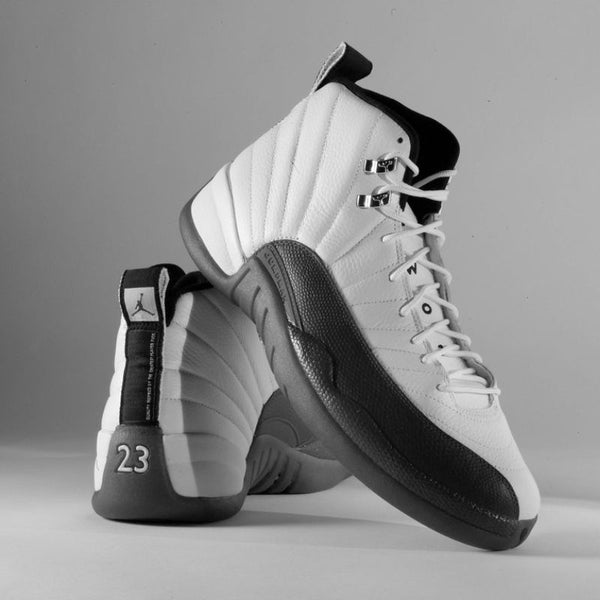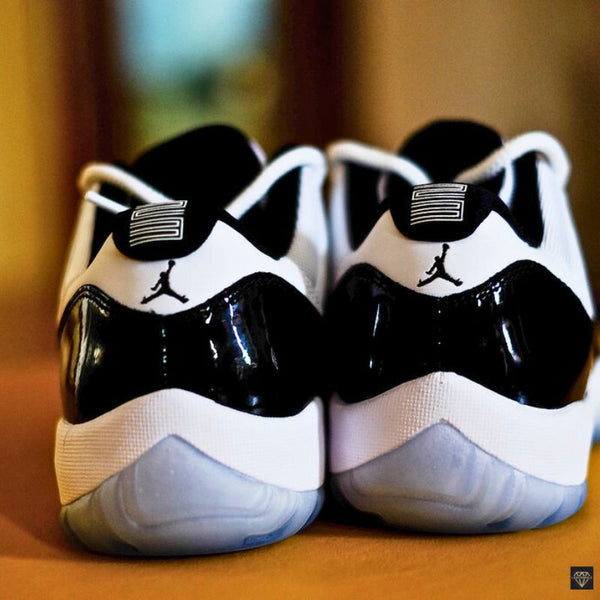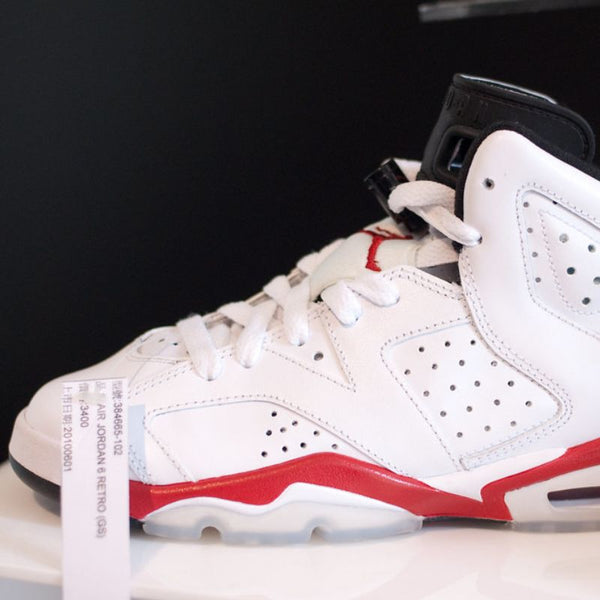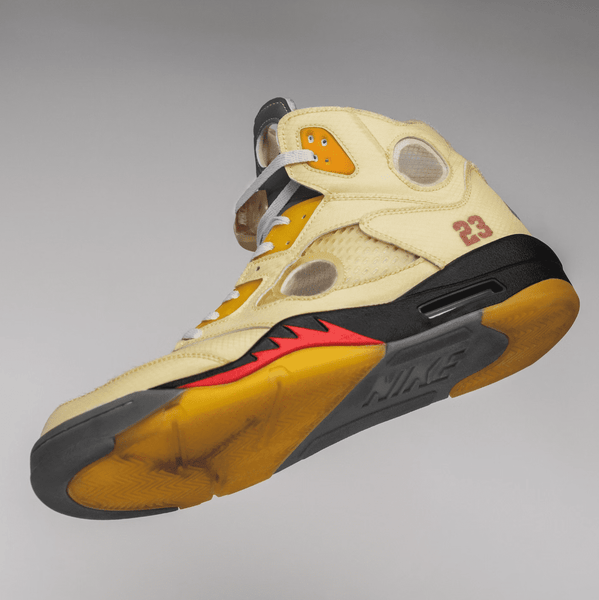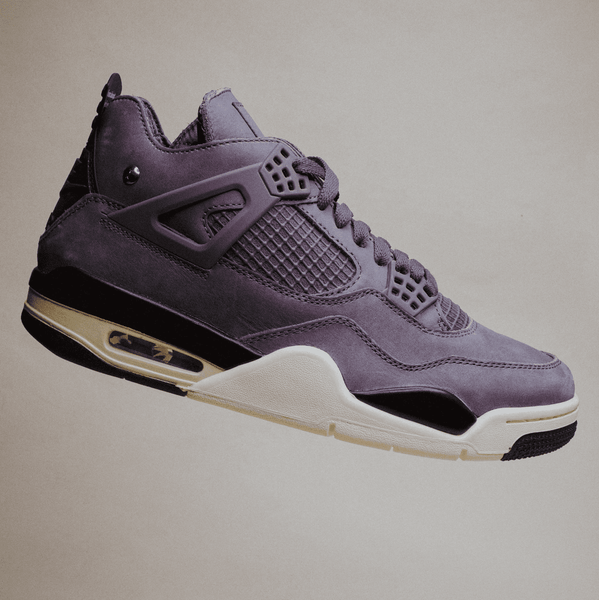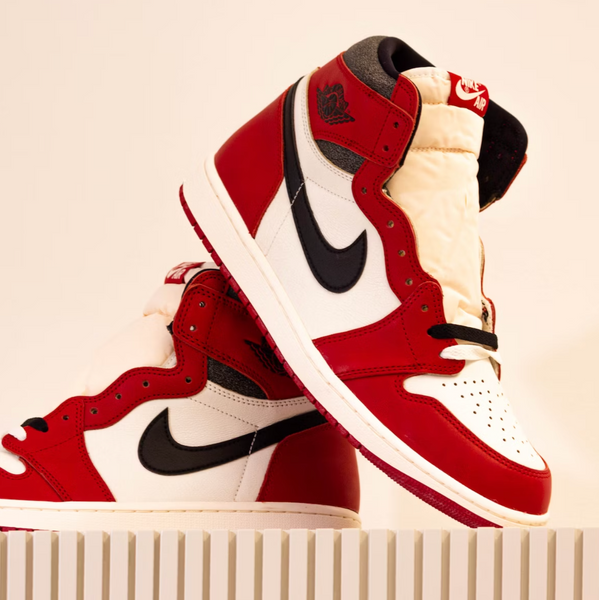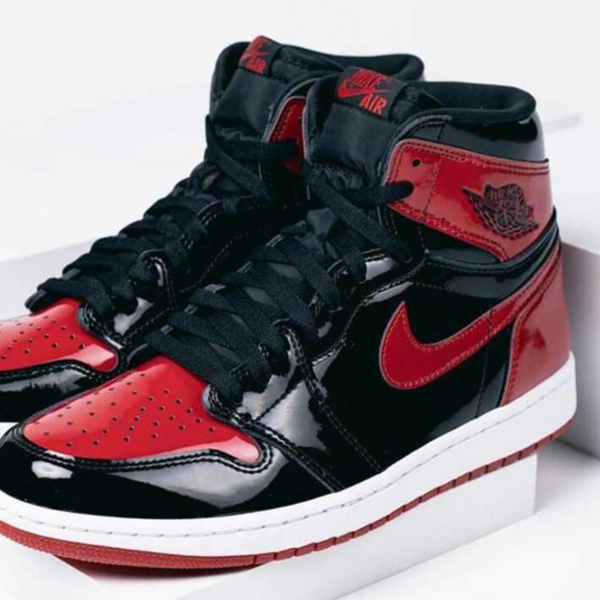How To Spot Real vs. Fake Air Jordan 1 Bred Toe
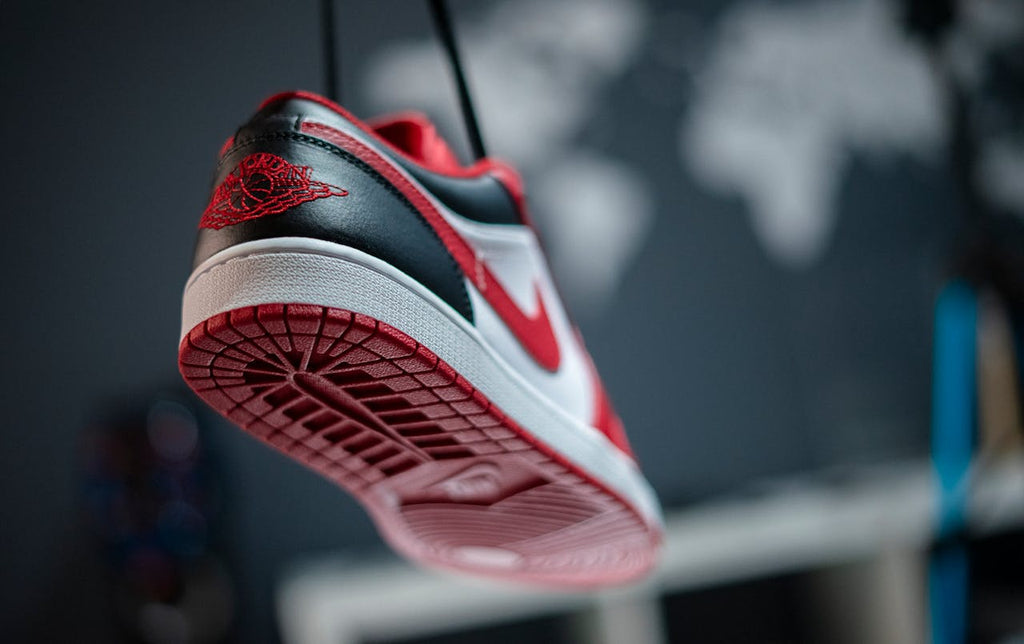
The Air Jordan 1 bred toe is an iconic shoe in the sneaker community. It is popular among basketball enthusiasts and sneakerheads, who have adopted it as a signature part of their style.
The shoe is well known for its recognizable red, black, and white color scheme. The Bred Toe was initially launched in 2018 with a retail price of $160. Since then, Nike has released different versions in the Bred colorway.
However, the massive popularity of the Bred Toe made this shoe a target for plagiarism. Counterfeit versions have flooded the market, hoping to make quick money from this big-name brand.
However, counterfeiters ignore details and use poor equipment. Even though their copies are identical, the trained eye can still spot some crucial differences.
Our Jordan 1 Bred Toe real vs. fake guide will help you understand the differences. Once you go through it, you can spot the flaws of counterfeit shoes!
Table of contents
- Initial Inspection
- Interior tongue label
- Material Quality
- Air Jordan logo
- Color tone
- Stitching Quality
- Swoosh
- Toe box
- Soles
- Rear patch
- Sock Liner
- Final Thoughts
Initial Inspection
If you got your hands on a good deal for an Air Jordan 1 bred toe, it is time for an initial inspection. At this point, we are interested in checking the proof of purchase, box and box label, and shoe smell.
An authentic pair should come with proof of purchase, such as a receipt or online order confirmation. Analyze these carefully, checking the retailer name, address, and transaction. Any inconsistencies here could indicate a fake product.
Next, we examine the shoe box. Original shoes come in a sturdy box with high-quality graphics and colors. The box might have been lost in second-hand products, so pay close attention to the other signs.
Next, examine the box label to understand if it is authentic. Font inconsistencies and poor text alignment could indicate a fake.
The shoe smell is another important indicator of an authentic product. The Air Jordan 1 bred toe is made of high-quality leather, providing comfort and longevity.
Natural leather has a distinct musky smell. Even if you're purchasing pre-loved shoes, the pleasant smell will still be there.
On the other hand, fake products can have an unpleasant plastic smell. They don't use high-quality leather in production, so an intense smell of chemicals or plastic could indicate a fake product.
Our website has a general Jordan 1 guide, so don't forget to check it for more helpful information.
Interior tongue label
We examine the interior tongue label for the next step in the Jordan 1 bred toe real vs fake authentication guide. Compare your label to the original one you will see in this image.
Counterfeiters invest a lot of effort to create identical copies but won't recreate the exact details.
Nike products have a consistent font, spacing, and text placement. You will notice thinner or thicker text, poor alignment, and improper spacing in fake products.
Material Quality
The upper layer on the original Air Jordan 1 Bred Toe is made of natural leather, which has distinct characteristics. On the other hand, fake products are made of faux leather, which can be recognized if you do a simple test.
Doing a smell test will help you distinguish a Jordan 1 bred toe real vs fake. As previously mentioned, the real shoe will smell sweet and musty. And don't forget that this smell is also present in second-hand shoes.
If you're looking at the listing, check the closeup photos of the leather. Genuine leather has irregular grain patterns and imperfections.
Feel the texture with your fingers if you have the shoe in your hands. Authentic leather has an irregular grainy texture and wrinkles. Also, it feels very soft and velvety.
On the other hand, a fake product has a repetitive pattern. Faux leather has a printed pattern that looks uniform. In addition, it has a strong chemical odor.
Air Jordan logo
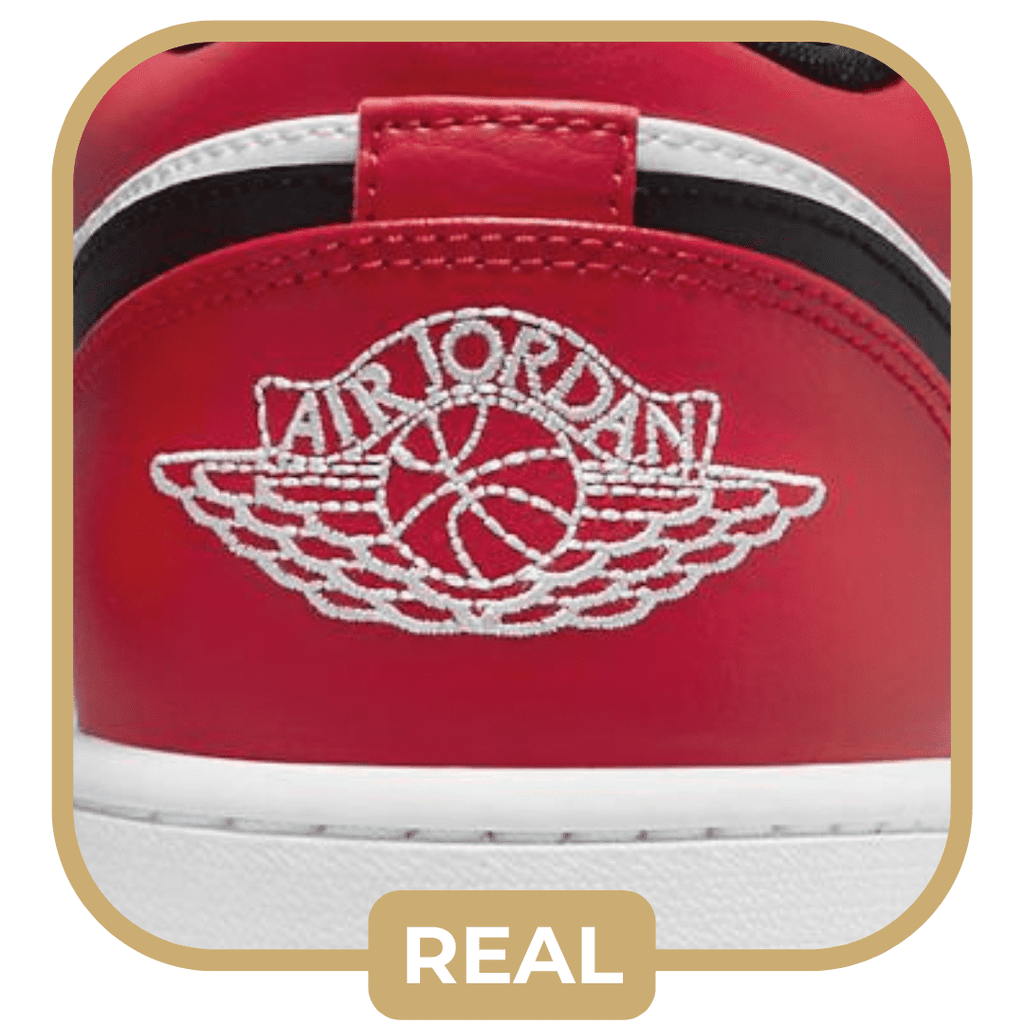
The Air Jordan logo is a signature feature of this collection. Just a reminder that Nike keeps their branded logo consistent with every product, and any variations could indicate a fake.
The quality of the logo is another telltale sign. The logo is embossed into the leather in the original, making it look dimensional. On the other hand, counterfeiters use poor techniques, and the leather isn't profoundly embossed.
Lettering
The Air Jordan logo comes with a consistent font and thickness. In fake products, you can notice that the letters are thinner and have inconsistent spacing.
Wings
The wings are part of the Air Jordan logo. If you look closely, you can notice inconsistencies in the fake product.
The fake logo will have the wings improperly positioned and too close to the stitching. You can also notice how the pattern isn't the same.
Color tone
The Air Jordan 1 Bred Toe has a recognizable color scheme of black, white, and red. Even though counterfeiters try to copy the exact colorway, you might notice some differences in the color tones.
Compare your shoe with the photos of authentic Bred Toe pairs. In fake products, you can notice inconsistencies in the color intensity.
For example, the red might appear faded. Or the black might not be the same tone as the original.
Remember that Nike has strong quality control practices, and all their products should look identical. Any inconsistencies in the color tone could indicate a fake.
Stitching Quality
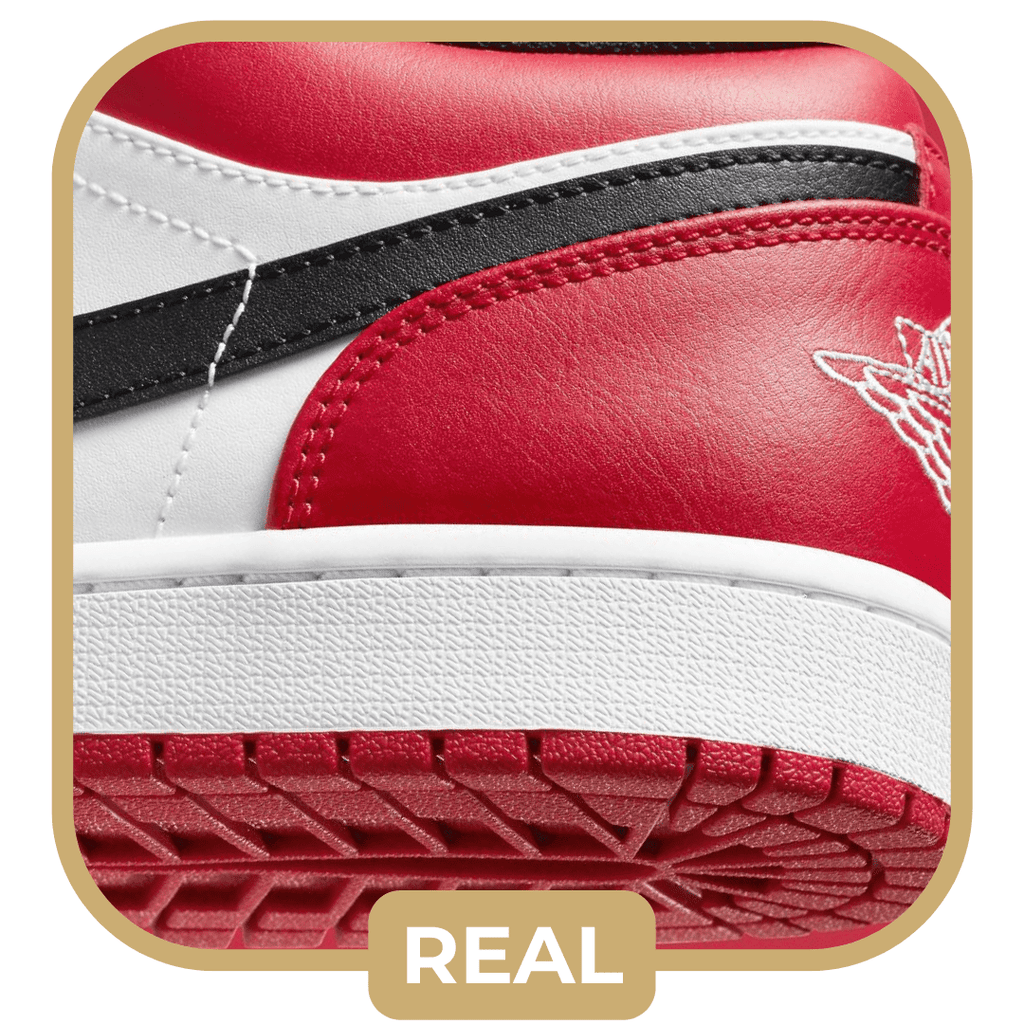
The stitching quality is always the most obvious sign of a fake product. Even though counterfeiters do their best to copy the aesthetics, they don't have the sophisticated machinery to provide excellent stitching quality.
The stitching not only looks poorly made but also impacts the shoe quality. With constant wear and tear, fake shoes will quickly fall apart.
Take a closer look at the stitching and analyze the individual stitches. Original products should be smaller and pressed well into the leather. Also, you will notice that the thread used is way thicker.
In fake products, the individual switches are longer and use thin threads. Also, the stitching is uneven and does not form a straight line.
Swoosh
The swoosh logo is a signature feature of Nike products. At the same time, it is one of the easiest ways to distinguish between a Jordan 1-bred toe is real and fake.
Poor stitching, incorrect shape, and wrong placement are some indicators that reveal a fake product. The upper part of the logo should be closer to the eyelets than the midsole.
Also, you can notice how the original has a pointy top and precise edges. In the fake, you can see how the poor cutting techniques left uneven seams.
Toe box

As we move to the front of the shoe, the toe box is the next point of interest. We observe the shape and perforation holes to differentiate between fake and authentic shoes.
Perforations
Original Nike sneakers have small perforations placed in a regular pattern. They are done with sophisticated equipment for precise cutting.
On the other hand, we can't say the same for the fake product. It has large perforations that are placed too close to the seams.
Shape
Next, we compare the toe box shape to differentiate between a Jordan 1-bred toe real and fake. The original one looks slim and thin.
On the other hand, the fake toe box is high and inflated. Despite being an aesthetic issue, it can also affect comfort.
Soles
When observing the soles, look closely at the texture, color, and pattern. These signs are crucial for identifying a fake.
In the authentic shoe, the texture consists of tiny grains. At the same time, they are more prominent in the fake model.
When you observe the pattern, you can notice that the fake one is poorly cut. It doesn't come with the precision and straight lines as the original.
Lastly, we observe the color. The Bred Toe comes with a signature red sole with a deep tone. If it appears lighter or faded, it is likely a fake product.
Rear patch
When you see the rear patch in the fake product, it instantly gives off a low-quality feel. The uneven stitching is the first sign that gives off a fake shoe.
In the fake shoe, the patch is poorly attached to the rear. Also, it is wider than the original one.
Sock Liner
To round up this authentication guide, we observe the sock liner. In the original product, it is thin and has a recognizable honeycomb pattern.
On the other hand, the sock liner is bulky in the fake Bred Toe. Also, it has a different pattern.
Final Thoughts
Ever since 2018, the Bred Toe has been popular in sneaker culture. The market is flooded with fakes, so pay attention to the product you're buying. Look closely at the logo, stitching, sole pattern, and other details to tell if a product is fake.
However, telling the difference between Jordan 1 bred toe real and fake can be difficult for the untrained eye. If you want to be on the safe side, it would be best to use authentication services. Our authentication experts can help you identify a fake product and save you from scams. You only need to submit a few photos; our experts will do the rest.

